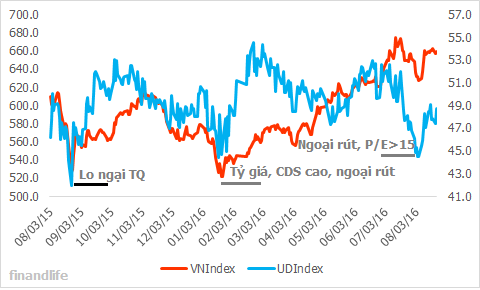“You'll know you are doing something right when you feel nervous about opening a position. A true contrarian is always nervous before he opens a new position. If you are feeling too confident, reassess the situation. Perhaps you missed something.
It's normal to feel nervous when you are going against the crowd.”
Sol Palha
Trong môn tài chính hành vi, người ta giải thích tâm lý sợ hãi khi đi ngược đám đông xuất phát từ bản năng động vật của con người. Đàn cá đi theo bầy khổng lồ vì tạo ảo giác cho kẻ săn mồi, cảm giác được yên tâm hơn. Đàn ngựa vằn trên các lãnh nguyên Châu Phi luôn tụ tập thành đàn lớn, vì cái lợi của đàn giúp chúng cảnh báo tốt với những mối nguy như sư tử. Đàn chim cánh cụt sát cánh với nhau ở vùng băng giá vì chúng giúp thân nhiệt không bị hạ thấp bởi cái khắt nghiệt của mùa đông.
Sợ hãi khi đi ngược đám đông là chuyện rất bình thường, nó là cái bản ngã sinh tồn vốn dĩ, nên đừng cố tỏ ra không sợ, khuôn mặt vs nội tâm đôi khi không đồng nhất, gồng quá nó mỏi.
FINANDLIFE
----------------------------
1. Patience and Discipline:
If you fail here, all other rules are useless. Trades do not always appear quickly. Investors often have to wait for the right moment. Smart investors may have to wait for the market or a stock to come to them. And it's best if investor sentiment is euphoric (ju’fonik: phấn khích) or in panic mode. That may give a contrarian investor (nhà đầu tư ngược xu hướng) a clear signal to go in the opposite direction.
2. Popular Media:
Understanding the psychology of the masses can help make you a better investor. Investors should use popular media outlets to generate contrarian ideas. They can help you determine what the masses are frothing (sủi bọt, quấy rầy) about and what investments you should pick or avoid.
3. Formulate a Plan:
The plan should include profit targets on every trade, and, an exit plan, in case the trade does not work out. Decide first how much you are willing to lose. Do not only focus on how much you want to make because some trades will not work out. If the trade sours (chua, khó nhai, sour apple), the stop you have in place will limit your downside. Ensure the stop is a trailing stop. That is, the stop will automatically adjust as the stock rises in value. Your chances of walking away with a profit will be much higher. Never widen the stop. If the stock still looks good, wait for conditions to calm and reassess the situation. By the same token (tương tự vậy), take some money off the table when profits start to roll in. You do not have to close the entire position, but it's always a good idea to take some profits in the beginning. If the stock suddenly takes a turn for the worse, you still earn a partial profit.
4. Options Are a Big No-No:
Under no circumstances should you jump into options if you have just started trading, except for selling covered calls, or puts if you understand the strategy. First try to make some money buying and selling stocks. When you become good at this, you can venture into options. If you are buying calls and puts, wait until you have banked some profits and only use profits to speculate.
5. Money Management:
This point cannot be emphasized enough: No matter how good a trader you think you are, without proper money management your chances of success are slim. The most important rule is to spread out investments. You'll be covered if something goes wrong. Too many traders become emotional and suddenly feel that they have discovered the home run (thành công rực rỡ) stock. Instead of a home run, they may strike out. It's best never to count too heavily on any one investment.
6. Technical Analysis:
Whether you choose to become a contrarian investor or not, you can greatly improve your trading results by understanding the basic concepts of technical analysis. Getting a grasp of the following, support points, resistance points, ADX, simple moving averages, relative strength index and understanding the concept of drawing simple trend lines, can only make you a better contrarian investor.
7. Understand the Market/Sector You Are Entering:
Do not jump into the markets without taking the time to understand the sector you are getting into, unless you have opted to play the indices. If you are going to be an index trader, then get a feel for the markets. There is a wide chasm (/’kasm/ lổ hổng) that separates theory from practice. Here is an extensive of free sources.
8. Learn to Relax:
If you are not relaxed, your emotions will take over to your detriment (/detriment/ gây tổn hại, mối nguy). Contrarian investing is all about dealing with emotions. If you are stressed out, you are starting off wrong. How will you be able to spot (phát hiện) any change in emotions if you are already emotional? Whenever you feel that the situation is getting to you, take time to regain your perspective (lấy lại quan điểm). There is a time to be long, a time to be short and a time to sit out. Sit on the sidelines (băng ghế dự bị) when you are emotionally unstable or stressed.
Final Points:
The best time to open a contrarian position is when most investors are feeling intense happiness or distress. Such extremes in emotion create opportunities.

Source: Sol Palha